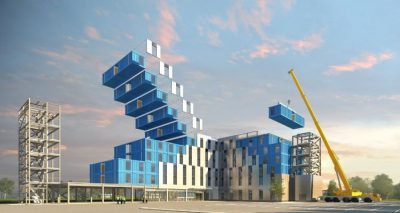Introduction
Modular buildings can be referred to as volumetric construction and or prefabricated buildings, they are buildings that are solely made up of components that are set up or manufactured on assembly lines in factories. These components following production are transported to the site and assembled on-site in a variety of arrangements. With ever-changing climates across multiple countries, there is always a concern about how we build modern, sustainable, and lasting structures that are desperately needed. Could this lead to a boom in Pre-Fabricated and Modular Construction?
History of Prefabrication and Modular Building:
Prefabricated structures or buildings that are produced in factories on assembly lines sound like a relatively new development. These buildings or structures are often associated with being developed in the 2000s but it actually dates back much longer than expected. There are data which is dated from up to three centuries ago and has evolved to the prefabricated buildings of now.
The first modular buildings date back to the early 1600s. There’s a record of a fisherman in the early 1600s who sailed from England to America and wanted to build a house with English construction methods he came up with the solution of having an unassembled home transported across the Atlantic Ocean and assembling it on American soil.
From this point as you’d expect, modular or prefabricated construction continued to adapt in the 1800s it started to become a lot more common. For example, with mining booming across the USA, there was a need for quick housing to be set up. The Californian Gold Rush saw over five hundred modular homes manufactured in New York City and transported to California which is no small distance!
After the development of the assembly line in the 1900s it became a lot easier to produce modular or prefabricated homes at an affordable price which in those times was a lot more attractive to consumers. The assembly line allowed for prefabricated homes to provide quick and low-cost solutions to the housing crisis following World War II. Although a much more efficient method with the addition of the assembly line, it is clears that from the record of the first modular building in the 1600s, prefabricated buildings have provided both quick-acting and innovative solutions.
Towards the end of the 20th century, the modular building industry started to expand from housing into industrial projects. But the advantages were the same, modular buildings allowed for commercial projects to act fast, it was cost-effective and it could be altered easily to suit the needs of the customer. Although basic the early structures such as the basic American diner which was actually transferable by train nearly ready to function and were installed in an extremely quick manner. In Ireland, you might remember prefab buildings which were used to expand schools and hospitals to prevent overcrowding and expand their available space as you can see from the picture below.
